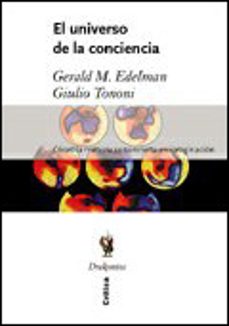Imprescindibles
Más vendidos Libros más leídos eBooks más leídos Todos los libros Todos los libros Autores destacados Series y sagas
Recomendados Libros recomendados Autores destacados Libros que inspiran Vidas con historia LGTBIQ+ English books
Ficción
Literatura Contemporánea Estudios literarios Clásicos Cuentos Poesía Teatro Libros de bolsillo Sagas literarias
Géneros literarios Novela romántica y erótica Novela negra Novela histórica Narrativa fantástica Novela de ciencia ficción Novela de terror Narrativa de humor Narrativa de viajes
No Ficción
Ciencias y tecnología Biología Ciencias Ciencias naturales Divulgación científica Informática Ingeniería Matemáticas Medicina Salud y dietas Formación Idiomas Estilo de vida Libros de Cocina Guías de viaje Narrativa de viajes Deportes Libros de Juegos Manualidades
Humanidades Autoayuda y espiritualidad Ciencias humanas Derecho Economía y Empresa Psicología y Pedagogía Filosofía Sociología Filología Biblioteconomía Estudios filológicos Estudios lingüísticos Estudios literarios Historia y crítica de la Literatura
Infantil
Juvenil
#Jóvenes lectores Narrativa juvenil Clásicos adaptados Libros Wattpad Libros Booktok Libros de influencers Libros de Youtubers Libros Spicy Juveniles Libros LGTBIQ+ Temas sociales Libros ciencia ficción Libros de acción y aventura Cómic y Manga Juvenil Cómic Juvenil Manga Shonen Manga Shojo Autores destacados Jennifer L. Armentrout Eloy Moreno Nerea Llanes Hannah Nicole Maehrer
Libros de fantasía Cozy Fantasy Dark academia Hadas y Fae Romantasy Royal Fantasy Urban Fantasy Vampiros y hombres lobo Otros Misterio y terror Cozy mistery Policiaca Spooky Terror Thriller y suspense Otros
Libros románticos y de amor Dark Romance Clean Romance Cowboy Romance Mafia y amor Romance dramatico Romance dramatico Romcom Sport Romance Otros Clichés Enemies to Lovers Friends to Lovers Hermanastros Slow Burn Fake Dating Triángulo amoroso
Cómic y Manga
Novela gráfica Novela gráfica americana Novela gráfica europea Novela gráfica de otros países Personajes, series y sagas Series y sagas Star Wars Superhéroes Cómics DC Cómics Marvel Cómics otros superhéroes Cómics Valiant
eBooks
Literatura Contemporánea Narrativa fantástica Novela de ciencia ficción Novela de terror Novela histórica Novela negra Novela romántica y erótica Juvenil Más de 13 años Más de 15 años Infantil eBooks infantiles
Humanidades Autoayuda y espiritualidad Ciencias humanas Economía y Empresa Psicología y Pedagogía Filosofía Historia Historia de España Historia Universal Arte Cine Música Historia del arte
Ciencia y tecnología Ciencias naturales Divulgación científica Medicina Salud y dietas Filología Estudios lingüísticos Estudios literarios Historia y crítica de la Literatura Estilo de vida Cocina Guías de viaje Ocio y deportes
GERALD M. EDELMAN
Recibe novedades de GERALD M. EDELMAN directamente en tu email
Filtros
Del 1 al 5 de 5
BASIC BOOKS 9780465007646
We are on the verge of a revolution in neuroscience as significant as the Galilean revolution in physics or the Darwinian revolution in biology. Nobel laureate Gerald M. Edelman takes issue with the many current cognitive and behavioral approaches to the brain that leave biology out of the picture, and argues that the workings of the brain more closely resemble the living ecology of a jungle than they do the activities of a computer. Some startling conclusions emerge from these ideas: individuality is necessarily at the very center of what it means to have a mind, no creature is born value-free, and no physical theory of the universe can claim to be a "theory of everything" without including an account of how the brain gives rise to the mind. There is no greater scientific challenge than understanding the brain. Bright Air, Brilliant Fire is a book that provides a window on that understanding.
Ver más
Tapa blanda
Editorial Crítica 9788484323747
¿Que pasa en nuestras cabezas cuando pensamos? ¿Cómo es que los fenómenos físicos que se producen en el interior de un tejido gelatinoso dan lugar al fantasmagórico mundo de las experiencias conscientes, un mundo que contiene todo lo que sentimos y conocemos, todo, en definitiva, lo que somos? Cientificos y filosofos se han enfrentado a preguntas como estas a lo largo de siglos y siglos, ofreciendo respuestas con nula o escasa base experimental. Solo recientemente el tan oscuro como fascinante universo de la consciencia y el pensamiento humano esta comenzando a convertirse en una autentica ciencia, aunque en ningun caso lo ha hecho de una forma tan evidente y atrevida como mediante las ideas propuestas por el premio Nobel de Medicina de 1972, Gerald M. Edelman, ideas que el mismo presenta y desarrolla en este libro, escrito en colaboracion con otro distinguido neurobiologo, Giulio Tononi. Al igual que Galileo revoluciono nuestra comprension del cosmos explotando las posibilidades de un entonces nuevo instrumento, el telescopio, Edelman se esta enfrentando a ese "Santo Grial" de las neurociencias que es explicar que es la consciencia, beneficiandose de las posibilidades que abre una ingeniosa tecnologia que permite detectar minusculas corrientes y ondas cerebrales asociadas a
Ver más
Tapa dura
Del 1 al 5 de 5






























